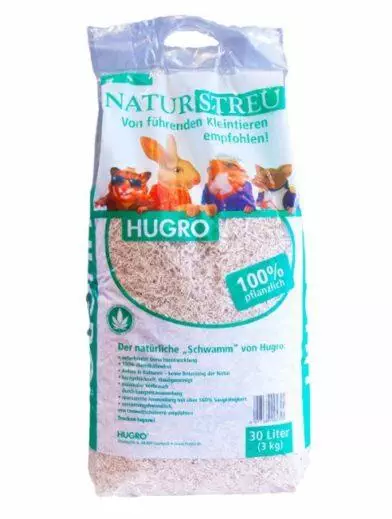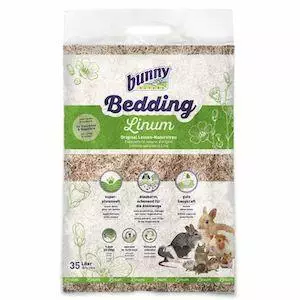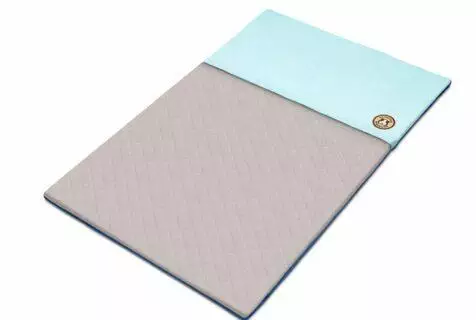Important Things To Consider
Absorbency
The whole reason for lining your cage is to help absorb urine quickly and efficiently.
Without top-quality bedding, your cage will need cleaning far more regularly and your guinea pig will need lots of extra bathing sessions. Walking around on wet and damp bedding all day also tends to most commonly cause issues with the feet, including infections like bumblefoot.
Why give yourself more work to do as well as risk making your pig ill?
A super-absorbent material ensures guinea pigs aren’t festering in patches of moisture and are less susceptible to bad bacteria and infection. The cage will also be a lot less odorous!
Dust-Free
A really important aspect to get right when picking guinea pig bedding is to make sure it’s not dusty. This might not seem like a realistic issue, but if you think of a material like wood shavings and how fine and ground down it can get… dust is a very real problem that can affect guinea pigs.
Guineas have fragile little lungs and so dusty bedding can be incredibly taxing on their respiratory system, therefore, you need to at the very least be on the lookout for bedding labelled as ‘low dust’.
We, however, recommend trying to find items labelled as ‘dust-extracted’ as this completely lowers any risk of infections of the respiratory tract.
Odour Control
Urine is not a particularly clean substance and guess what? It doesn’t smell particularly great either. Bedding which promises to control odour will help make going and hanging out with your guinea pigs a pleasant experience rather than a pungent one!
The key here is again absorbency more than anything else, so prioritise it over scents or fragrances which are more likely harmful than helpful.
Temperature
Consider whether your guinea pig is indoor or outdoors and how climate might affect them. Guinea pigs are sensitive to temperature and are at both risk of overheating in summer and being cold in winter. Aspen shavings and paper bedding is a great way to keep cool and fleece liners are good options for staying warm!
Size
Before purchasing any kind of bedding you need to work out how much you possibly need. If you have an incredibly large enclosure and spot clean daily, you’re going to need a fairly large surplus bag of bedding or an incredibly large, sweeping fleece liner!
Comfort & Floor Type
Bedding which boasts soft materials is always best as your guinea pig is going to be walking around on it all day!
Also, if you have a wire-caged floor, no amount of bedding is going to help make this more comfortable for a guinea’s fit and so all bedding needs to be placed on a smooth, flat floor surface. Bedding which boasts soft materials
Types of Guinea Pig Bedding
The reason that choosing comfy and absorbent bedding is so hard, is because there are so many different options out there, all with their pros and cons.
Read a bit more about these types and what they can offer to help you make your decision:
Wood Shavings
Used for decades by most guinea owners, wooden shavings are one of the cheapest and most commonly used types of bedding.
However, you need to be careful when shopping for this material, as getting it wrong is easy and potentially harmful for your pet.
Cedar and pine wood shavings are widely frowned upon by experts and should never be used on your ickle pipsqueaks, however it’s a material which often sneaks between the cracks.
Despite having a nice, natural fresh pine smell and being fairly cheap, they’re easily the worst option for wooden shavings. These woods contain natural toxins which can make piggies ill and studies have shown they can even damage the liver!
The only time pine shavings are acceptable is if they have been kiln-dried, which removes those harmful toxins!
The best wooden shavings to go for though are aspen shavings as these contain no naturally harmful oil, although it’s less absorbent than kiln-dried pine!
The thing to be most worried about when browsing wooden shavings though is how dusty they are, so always look for low dust and extracted dust options!
Hemp Bedding (Aubiose)
An upcoming and increasingly popular type of bedding, hemp bedding is made from natural fibres of the plant, making it one of the most organic bedding materials.
With several layers of hemp, urine is drawn downwards from the top to the lower layers beneath. This helps keep the upper layers dry and hygienic for your piggies to muck about on!
Although it’s essentially odourless, it’s super absorbency means smells of urine won’t linger around in the cage either.
For us, it’s probably the best natural bedding source!
Wood Pulp
Often a safe alternative to wood which promises higher rates of absorption, wood pulp is derived from natural virgin wood fibres and often goes through extensive dust removal procedures.
Paper Bedding
Paper bedding is often a safer, softer and fluffier version of wood shavings and offers much more absorbency.
That being said, paper bedding is not always better than wood shavings, because like with anything, not all products are created equal.
Always check that it’s low dust, and doesn’t contain artificial colour or bleaches that are unnecessary and potentially unhealthy.
We’d also warn you to beware of paper bedding which advertises itself as recycled or reclaimed paper. While this might seem like a brilliant eco-friendly choice, it increases the risk of this material containing toxins.
Fleece Lining
Coinciding with the growing popularity of keeping guinea pigs indoors rather than in outdoor hutches, fleece bedding is entirely unlike the others on this list.
A kind of mattress like design, they feature a soft, top layer that’s comfy for guinea pig feet, an absorbent middle layer to soak up urine and a waterproof bottom, preventing it from soaking through.
The main reason fleece bedding is so popular is because it’s cost-effective thanks to their washable material. Although slightly expensive on initial purchase, you’ll no longer have to buy monthly bags of bedding!
They’re also free of issues like dust and are generally more aesthetically appealing, coming in different patterns and colours!
However, despite being less messy and easier to manage, it does require a bit more daily cleaning, as obviously urine and faeces sit a bit more obvious on the liner.
Pellet, Hay, Newspaper (Other)
Pellet and hay options are both poor absorbers and so these days they are one of the least popular choices of bedding, however, they remain a cheap option on the market.
An even cheaper choice some owners make is to use newspapers, something we all still seem to have lying around despite the growth of online news!
Admittedly these options will save you a pretty penny, but ultimately, the lack of absorbency is just inviting mould and bacteria. If you want the best for your guinea pigs, you have to buy them the best and cheap options like this are low-cost for a reason!
Natural Bedding
Keeping up with all the new types of guinea pig bedding is almost impossible these days as companies are always rushing to find an all-new material which is more absorbent or more eco-friendly than any other.
Some of our current favourites such as Bunny Bed for example are made from recycled linen, a material that isn’t exactly common in use. For anything like this, just be sure to read the label and make sure this too good to be true new material really is just that.
More often than not they will focus on natural material and provided you can be sure it’s not dusty or toxic to guinea pigs, feel free to take advantage of any purported advances in absorption or odour control!
Bedding To Avoid
To be more clear about the bedding you need to avoid, here are cage and hutch linings generally deemed to be unsuitable:
- Sawdust
- Cat litter
- Non-kiln-dried pine shavings
- Cedar shavings
- Newspaper (on its own)
- Puppy pads or training pads for cats/dogs
Best Bedding For Enclosure Type (Indoor or Outdoor)
In terms of indoor guinea pigs, any kind of bedding is fine, with most owners opting for fleece or paper options as they create slightly less mess inside the home.
Due to its odour control, some may also opt for hemp, as no one wants a home that smells of pee!
However, when it comes to kitting out a classic outdoor hutch, we recommend going for a slightly more classic setup. Fleece liners do not fare well in outdoor conditions as they’re inability to absorb faeces attracts flies! Instead, a combination of shavings and bedding hay which can provide warmth.









